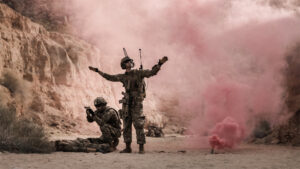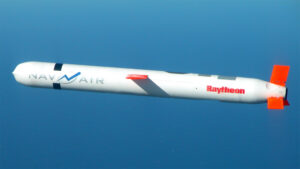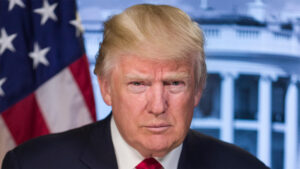So I was sitting having dinner on the Queenstown wharf last night, minding my own business, when New Zealand Prime Minister Bill English and Australian Prime Minister Malcom Turnbull walked by. Like literally right by. No more than six fee-, er, two meters from where I was sitting.
What is it with the world not leaving me alone on holiday??
Anywho, rugby rivalry aside, there are no two countries in the world that are closer politically, economically and culturally. New Zealand and Oz are brother countries who face many of the same challenges and so typically choose to face them together. The two primes were having their countries’ annual coordination powwow.
From what I can gather from local press, while their agenda dealt with a fair number of local issues, their top foreign policy concern was dealing with the Trump Effect. Specifically, both New Zealand and Australia were founding members of the consortium of countries that negotiated the TransPacific Partnership trade deal (TPP). As the United States was about half of the TPP’s economic heft, both Australasian states were more than a bit disappointed when President Trump nullified American participation in the process. While in Queenstown, English and Turnbull apparently explored ways to proceed with “TPP minus one”, although English himself noted that it wasn’t likely feasible and his efforts could probably just be chalked up to “naïve Kiwi optimism”.
Whether you are like me and you think that China’s days are numbered, or you’re more with the conventional wisdom and so you fear that we will all be bowing to our Chinese masters before long, you probably think it makes sense to diversify your trade portfolio away from all things Chinese. TPP would certainly help do that, and so it isn’t a surprise that the Kiwis and Aussies are groping for a way forward without the United States’ participation.
But this all brings me to a broader point.
Take a look at the map below; it’s broadly is how Washington saw the world at the height of the Cold War. The deep blue countries are the Americans’ back yard — places they were willing to fling nukes over. The medium blue were the core allies in the Bretton Woods system. The orange was the competition, and the light-blues the field of battle. The Cold War was global in scope, so everything was in play. Everything mattered.
Not anymore.
This next map shows how I anticipate the Americans viewing the world in 2020. U.S. perceptions of the world have been evolving slowly away from global engagement since 1992. It’s a process that picked up speed with the 2007 financial crisis, and is now rocketing into fast-forward under Trump. (Note: I put this map together in in 2015 — before the Trump Effect — so this might all come to pass earlier than I initially expected.)
There’s a lot of grey on this map; places the U.S. just doesn’t have a stake in. Those blue shades are countries that IMO it would behoove the Americans to have a constructive relationship, but that’s not the same as saying that the U.S. must have one. U.S. alignments are shifting, and since the stability that the United States imposed upon the world from 1945 to the present was designed to fight the Cold War, there aren’t all that many pieces of it that are going to hold without deliberate efforts from both the Americans and partners on the other side of the table.
So far Continental Europe has demonstrated vividly its obliviousness in this dawning era, while Britain very clearly understands where its bread is buttered. Japan has showcased it comprehends fully the new era’s more transactional nature.
The Kiwis and Aussies are somewhere in the middle. Australian Prime Minister Turnbull had a disastrous first call with Trump which apparently went something like this:
TURNBULL: So, Australia had this deal with Obama where you’ll take some illegal immigrants from us.
TRUMP: What sort of a dumb deal is that? I hate illegals.
TURNBULL: But you’re still going to take them, right?
TRUMP: *insert TrumpTantrumTM*
TURNBULL: Is that a yes?
Not the right topic to use to break the ice with the Donald.
Anywho, the Australian government has long been a very savvy operator because they have to be. Australia has but 24 million people. Its closest neighbor — Indonesia — has ten times that, and once you look at the teeming masses of South, Southeast and East Asia it is easy for an Australian to feel a bit overwhelmed. Canberra’s only option is excellent relations with the United States. I fully expect Australian-American relations to bounce back from what was reportedly a quite nasty diplomatic snafu, but the botched Turnbull-Trump call serves to underline the point.
NO relationship, NO alliance, NO trade deal, and NO relationship is safe. When the Americans rejigger things, there are no sacred cows. The United States wasn’t involved in the first three years of World War II, and they ended up leading Normandy and nuking Japan. The United States didn’t care about Korea, and then a year later had over 300,000 troops on the peninsula fighting Chinese human waves. The U.S. treated the Middle East like a backwater until 9/11, then it fought two hot wars and intervened unconventionally in over 20 countries.
The U.S. doesn’t care until it does. And the U.S. cares until it doesn’t. Its geographic position and military reach enable it to intervene and/or stop intervening in issues that are of core importance to every other country in the world in a matter of days, and right now everything is up for re-evaluation. Even the American alliance with Australia — probably the most worry-free, strategically-simple, culturally-easy alliance the Americans have — can see change.
Well, that’s my morning rant. I’m off to brunch in Wanaka where who knows who I’ll bump into. (Apparently Oprah is in town!)






